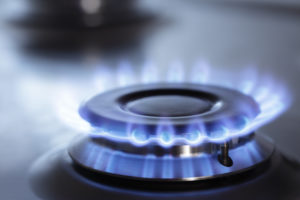 Natural gas fell in early European trading on Wednesday after two days of gains as investors weighed an expected bullish inventory report by the EIA on Thursday against diverging conditions across different regions of the US, spurring overall moderate cooling demand.
Natural gas fell in early European trading on Wednesday after two days of gains as investors weighed an expected bullish inventory report by the EIA on Thursday against diverging conditions across different regions of the US, spurring overall moderate cooling demand.
Natural gas for delivery in August traded 1.02% lower at $2.803 per million British thermal units at 08:02 GMT, shifting in a daily range of $2.836 – $2.796. The contract rose 0.96% yesterday, adding to Mondays 1.3% advance.
According to NatGasWeather.com, natural gas demand in the US will be moderate compared to normal through July 7th, with a hot weather pattern for the West, southern Plains and Southeast over the following seven days, while the rest of the US remains near normal.
Several weather systems will track across the eastern and central US this week, carrying showers, thunderstorms and somewhat cooler-than-normal temperatures. The West will remain hot with common highs in the upper 90s and 100s, and locally 110 degrees, which will drive very strong regional demand. The South and Southeast have also cooled a bit compared to last week, but are expected to get hotter tomorrow. However, additional weather systems will track across the central and eastern US on Thursday through the Fourth of July holiday, also spilling a few-degree cooling into northern Texas and the South.
Conditions will warm up over much of the US late this weekend and early next week as high pressure expands out of the western and into the central, southern and northeastern US, pushing readings into the 80s and 90s.
However, it still remains unclear, and of main interest, whether the high pressure gaining ground will manage to hold off seasonally cooler Canadian weather systems that will enter the north-central US as the second week of July progresses. If the ridge of high pressure manages to keep ground, this would set up a bullish pattern through mid-July, while a further advance of cooler Canadian air would would spell bearish sentiment, at least in the short-term. In any scenario, the West will remain hot to drive regionally strong cooling demand, while very warm conditions will persists over the Southeast as well.
Readings
According to AccuWeather.com, temperatures in New York on July 3rd will peak at 81 degrees Fahrenheit, 2 below usual, before jumping to 86 degrees three days later. The high in Chicago tomorrow will be 69 degrees, 15 below normal, but highs are expected to establish in the 80s as of July 5th.
Down South, Houston will peak at 91-95 degrees through July 9th, compared to the average 91-92. To the West, readings in Sacramento will max out at 105 degrees today, 15 above usual, before easing back to the low-mid 90s afterwards, while highs in Los Angeles over the next couple of weeks will be in the upper 70s and low 80s.
Stockpiles
Consensus forecasts for tomorrow’s inventory report by the Energy Information Administration point to a stockpiles gain of around 70 bcf for the seven days ended June 26th, below the average of 75 bcf and a gain of 102 bcf during the comparable period last year, due to very high natural gas demand through most of the tracked period.
The EIA said last Thursday that US natural gas stockpiles rose by 75 billion cubic feet in the week ended June 19th, 2 bcf below analysts’ consensus estimate and well beneath the five-year average gain of 86 bcf. Total gas held in US storage hubs amounted to 2.508 trillion cubic feet, narrowing a surplus to the five-year average stockpiles of 2.473 trillion to 1.4%, or 35 bcf, from 1.9% a week earlier.
The report after, due out on July 9th, will reflect this week’s comfortable weather across the east-central US, leading to an inventory build exceeding the average, but not by much. Early estimates call for a build of slightly over 80 bcf in the seven days ended July 3rd, compared to the five-year average inventory gain of 75 bcf, while stockpiles jumped by 94 bcf a year earlier.
Pivot points
According to Binary Tribune’s daily analysis, August natural gas futures’ central pivot point stands at $2.807. In case the contract penetrates the first resistance level at $2.862 per million British thermal units, it will encounter next resistance at $2.892. If breached, upside movement may attempt to advance to $2.947 per mBtu.
If the energy source drops below its S1 level at $2.777 per mBtu, it will next see support at $2.722. In case the second key support zone is breached, the power-station fuel’s downward movement may extend to $2.692 per mBtu.
In weekly terms, the central pivot point is at $2.791. The three key resistance levels are as follows: R1 – $2.848, R2 – $2.927, R3 – $2.984. The three key support levels are: S1 – $2.712, S2 – $2.655, S3 – $2.576.





